|
|
GeoAstro Applets |
Astronomy |
Chaos Game |
Java |
Miscel- laneous |
Physics Quiz |
Who is Who ? |
|
The planets of our solar System are orbited by moons, except the innermost planets Mercury and Venus:
 The force of gravitation between the planet (mass mP) and its moon (mass mM) is given by:  and the force
of gravitation between the Sun (mass mS) and the moon (mass mM)
by:
 The mean value
of the distance of the moon from the Sun (rSM) is
approximatly equal to the mean distance of the planet from the Sun
(semi-major axis rSP).
The ratio of the forces is  The values of the ratio (table
below) are showing some interesting results:
the extraordinary ratio of 0.45 for the Moon of our Earth means that the attraction by the Sun is about 2.2 greater the the attraction by the Earth! 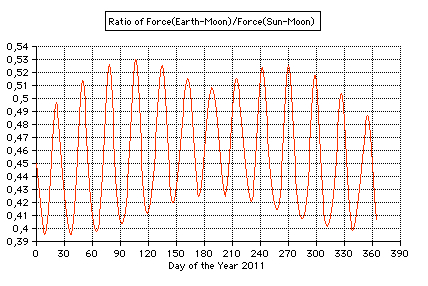 The ratio of the gravitation forces F(Earth_Moon)/F(Sun_Moon), fmax 0.53, min. 0.40, mean 0.46, computed by my Moon Distance Applet
|

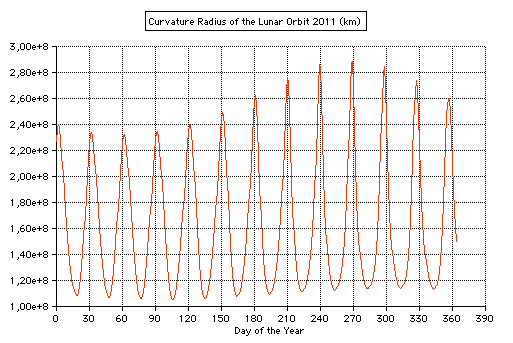
The geometric curvature radius of the lunar orbit at time t is computed from 3 positions at t-12h, t, t+12h.
It is always positive,
passing a maximum (about 2.6·108 km) at New Moon (2011: Jan 4, Feb 3, etc),
and a minimum (about 1.1·108 km) at Full Moon (2011: Jan 19, Feb 18, etc),
the mean value in 2011 is 1.65·108 km,
the radius of the Earth's orbit is r=1.50·108 km.
Computed by my Planet Applet
| The European
Space Agency has referred to the Earth–Moon system as a type of double planet. The moon does not actually revolve around the Earth; it revolves around the Sun in concert with the Earth (like a double planet system). It is the only moon in the solar system that is always falling toward the Sun (orbit always convex).  The orbit of a moon orbiting a planet of mass m orbiting the Sun (mass M) at a distance R is always convex if and only if the radius r of the moon's orbit exceeds a certain value (MathPages):  The Earth's
Moon (r
=384.400 km) meets the condition
r
> 259.000 km |
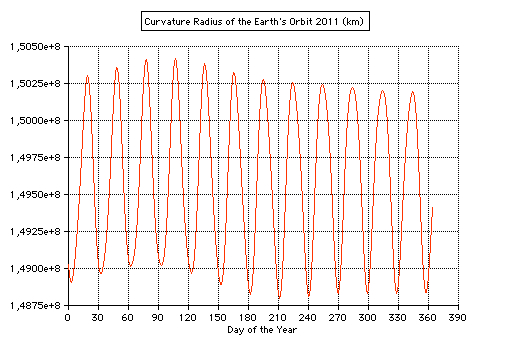
Computed by my Planet Applet
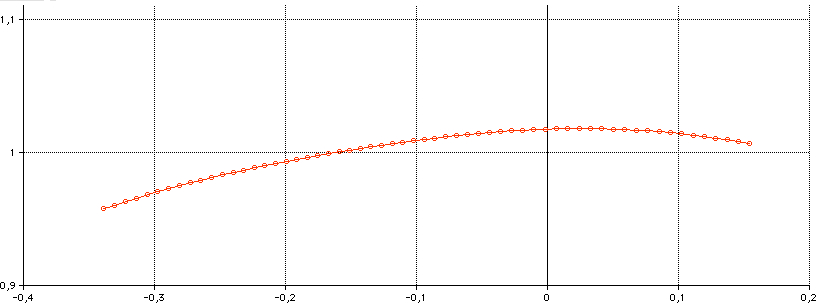
Heliocentric Orbit of the Moon, June 2010 (x-y-coordinates, AU), time interval 12 hours.
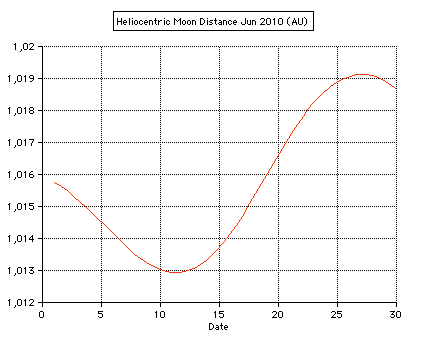
Heliocentric distance of the Moon, Jun 2010 (New Moon June 12, Full Moon June 26)
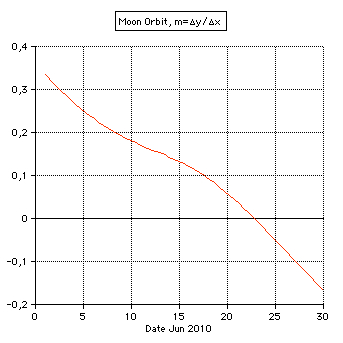
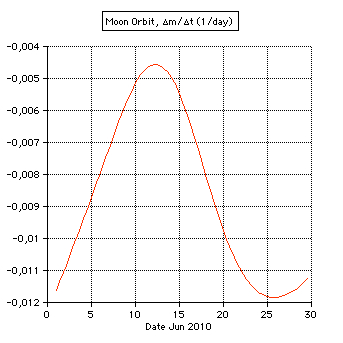
New Moon June 12, Full Moon June 26
Please visit my Moon Applet Collection
Visit my page: The Moon: orbit and phases
|
|
|
Origin of the Moon
(University of Arizona) The Moon
Always Falls Toward the Sun (MathPages) The
Formation of the Moon (Windows to the Universe) Theories
of Formation for the Moon (University of Tennessee) On The Formation of
Earth's Moon (ScienceWeek) |
| Books |
| E. Hantzsche:
Doppelplanet Erde-Mond, Teubner, Leipzig 1973. Isaac Asimov: Von Raum und Zeit, Ullstein, Frankfurt/M 1978. |
©
2011 J. Giesen
![]()
Last
modified:
2011,
Sep
26